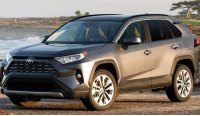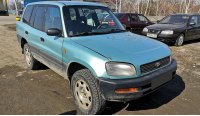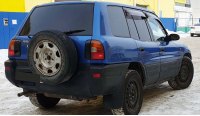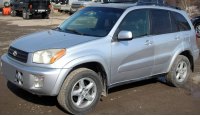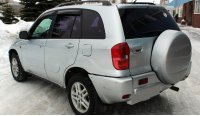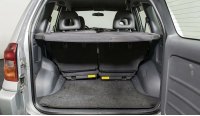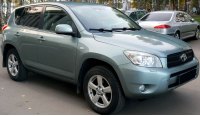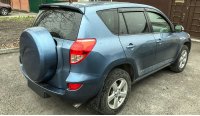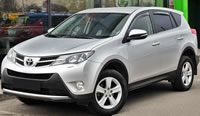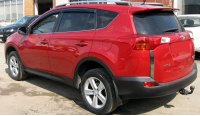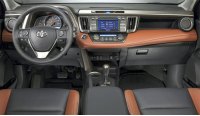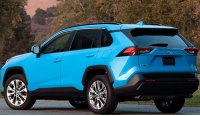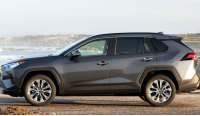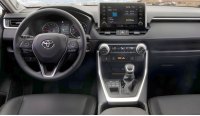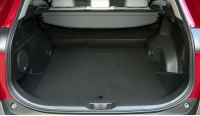Share information:
From other global automakers, RAV4 classmates and competitors are represented by the following cars - Chery Tiggo, Citroen C-Crosser, Ford Kuga, Great Wall Hover H6, Hyundai Tucson, Honda CR-V, Kia Sportage, Land Rover Freelander, Mitsubishi ASX, Mitsubishi Outlander, Mazda CX-7, Opel Antara, Nissan Qashqai, Renault Duster, Peugeot 3008, Skoda Karoq, Subaru XV, Suzuki Grand Vitara and Volkswagen Tiguan.
First generation (XA10, 1994-2000)
The first generation launched in May 1994 on a platform similar to «Carina» and «Corolla». The development of the car began in 1989. At first they produced a three-door hard top body, in March 1995 they began to produce a five-door station wagon, and in 1997 a convertible appeared. The three-door body had the following dimensions: length 3705 mm, width 1695 mm, height 1650 mm, wheelbase 2200 mm and curb weight 1150 kg. The five-door body was 4115 mm long, 1695 mm wide, 1660 mm high, wheelbase 2410 mm and curb weight 1150 kg. The front suspension is spring fully independent, the rear is also spring semi-independent. The brakes are disc front and drum brakes at the rear. Production was carried out only in Japan.
There were two petrol engines, both 2.0 liter (1998 cm3) with four cylinders in line, with double camshaft and electronic fuel injection «EFI». One engine was «3S-FE» 121 hp, increased to 129 hp in 1997, another «3S-GE» 177 hp. The gearbox was a five-speed manual or four-speed automatic.
In 1997, the model was updated, slightly changing the front and rear of the car, and a three-door convertible appeared.
Second generation (XA20, 2000-2005)
The start of sales of the third generation was in July 2000. The car is based on a platform «Toyota MC». Produced in a three- or five-door body. The three-door car was 3860 mm long, 1735-1765 mm wide, 1670 mm high, 2280 mm wheelbase and 1310 kg curb weight. The five-door body was 4230 mm long, 1735-1785 mm wide, 1680 mm high, wheelbase 2490 mm and curb weight 1370 kg. Trim and trim levels were «NV», «NRG», «GX» and «VX». Some of the options were as follows - anti-lock braking system, electronic stability control, air conditioning, height-adjustable driver's seat, cruise control, a six-speaker CD player, as well as power windows, mirrors and seats. The assembly of the car was carried out only in Japan.
Gasoline engines were only four-cylinder in-line, DOHC, four valves per cylinder, 1.8 liters (1794 cm3, 1ZZ-FE, 120 hp), 2.0 liters (1998 cm3, 1AZ-FE, 145 hp) and 2.4 liters (2362 cm3, 2AZ-FE, 160 hp). For the first time, a 2.0-liter diesel engine was installed on the RAV4 (1995 cm3, 1CD-FTV, DOHC, turbo) 116 hp. The transmission was either a five-speed manual or a four-speed automatic.
At the end of 2003, the model was updated, some equipment was improved, the safety of the car was improved, and electronic stability control was included in all models.
Third generation (XA30, 2005-2012)
The third generation was shown to the public for the first time at the International Motor Show in Frankfurt in September 2005, and sales began in November. The car is based on a platform «Toyota New MC». The body remained only a five-door station wagon with a wheelbase of 2560 mm and a length of 4395-4445 mm, a width of 1815 mm, a height of 1685 mm and a curb weight of 1500-1665 kg. Some countries also had a body with an extended wheelbase (2660 mm) 4620 mm long, 1855 mm wide, 1720-1755 mm high and curb weight 1590-1690 kg. The steering became electrically boosted instead of hydraulically boosted in previous generations. With a slightly modified front end, the car is sold in Japan as «Toyota Vanguard». Assembly was carried out in Canada, China and Japan.
The range of gasoline engines has expanded, mainly four-cylinder in-line engines, but one six-cylinder V-shaped has appeared:
- 2.0 liters (1998 cm3, 1AZ-FE) 150 hp
- 2.0 liters (1998 cm3, 1AZ-FSE) 147 hp
- 2.0 liters (1987 cm3, 3ZR-FAE) 144 hp
- 2.4 liters (2362 cm3, 2AZ-FE) 177 hp
- 2.5 liters (2494 cm3, 2AR-FE) 179 hp
- 3.5 liters (3456 cm3, 2GR-FE, V6) 269 hp
Diesel engines were two four-cylinder turbocharged, both with a volume of 2.2 liters (2231 cm3), one «2AD-FTV» 134-148 hp, other «2AD-FHV» 174 hp. The gearbox was installed five- and six-speed manual, four-, five- and six-speed automatic, and for the first time in the history of the model, a stepless variator appeared (CVT).
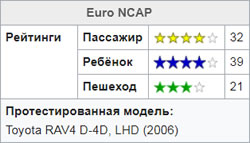
In 2008, they updated the appearance of the car and added a new gasoline engine. In 2011, another minor update was carried out.
Fourth generation (XA40, 2012-2018)
In November 2012, at the annual Los Angeles Auto Show, the next generation was shown to the public with the code «XA40». The car entered the stores in September 2013. Assembled on the platform «Toyota New MC», which is also used for «Avensis», «Auris», «Corolla», «Previa», «Prius», «Verso» and others, including for some brand cars «Lexus». The body was only a five-door wagon with a wheelbase of 2660 mm, a length of 4570-4605 mm, a width of 1845 mm, a height of 1670 mm and a curb weight of 1540 kg. Production was carried out in Canada, China and Japan.
Petrol engines were only 2.0-liter four-cylinders (1987 cm3, 3ZR-FAE, 144 hp) and 2.5 liters (2494 cm3, 2AR-FE, 179 hp). There were three diesel engines with a volume of 2.0 liters (1995 cm3, 2WW, 143 hp), 2.2 liters (2231 cm3, 2AD-FTV, 134-148 hp) and 2.2 liters (2231 cm3, 2AD-FHV, 174 hp). Also for the first time released a hybrid version with a 2.5-liter gasoline engine (2494 cm3, 2AR-FXE) with a total power of 197 hp. Transmission six-speed automatic or manual, as well as stepless variator (CVT).
In 2013 the European Committee «Euro NCAP» conducted crash tests on the car to determine its safety during collisions. See the table for the results. According to the Insurance Institute for Highway Safety (IIHS) the 2013 and 2014 model was rated «Fine» for head restraints and seats, roof strength, side and front impact with partial displacement. Small overlap frontal impact test rated «Badly». In 2015, the car was modified and it was rated «Fine» in this test.
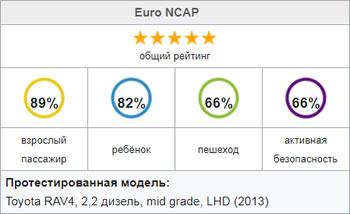
At the New York International Auto Show in April 2015, an updated «RAV4» fourth generation. The front and rear lights have become LED, instead of the speedometer, a color LCD display has been installed.
Fifth generation (XA50, 2018-present time)
In December 2017, a concept car was shown at the Los Angeles Auto Show «Toyota FT-AC», which was similar in size and shape to «RAV4». At the New York International Auto Show in March 2018, a production sample of the fifth generation of the series was presented «XA50». The car is based on a platform «TNGA-K», which is also used for «Avalon», «Camry» and «Lexus ES». The body was still a five-door station wagon with the following dimensions - length 4595 mm, width 1855 mm, height 1685 mm, wheelbase 2690 mm and curb weight 1530-1720 kg. Trim and trim levels were called «LE», «XSE», «XLE», «XLE Premium», «Adventure» and «Limited». The car was assembled in Canada, USA, South Africa and Japan.
The engines remained only gasoline four-cylinder 2.0-liter (1987 cm3, M20A-FKS, 175 hp) and 2.5 liters (2487 cm3, A25A-FKS, 205 hp). The gearbox was a six-speed manual, an eight-speed automatic «AWF8F35» or stepless variator (CVT). The hybrid car used a 2.5-liter gasoline engine (2487 cm3, A25A-FXS) with a total power of 222 hp

